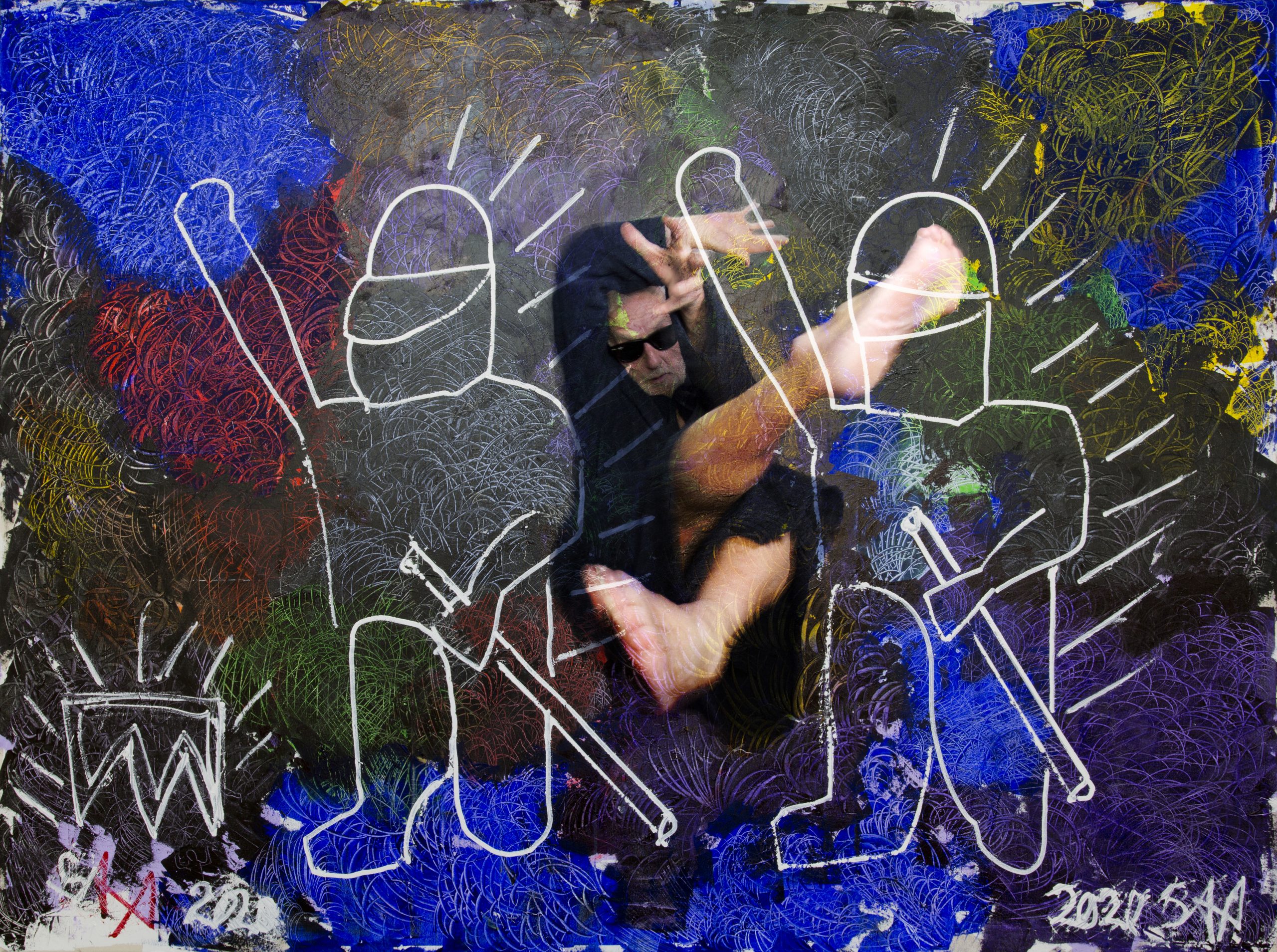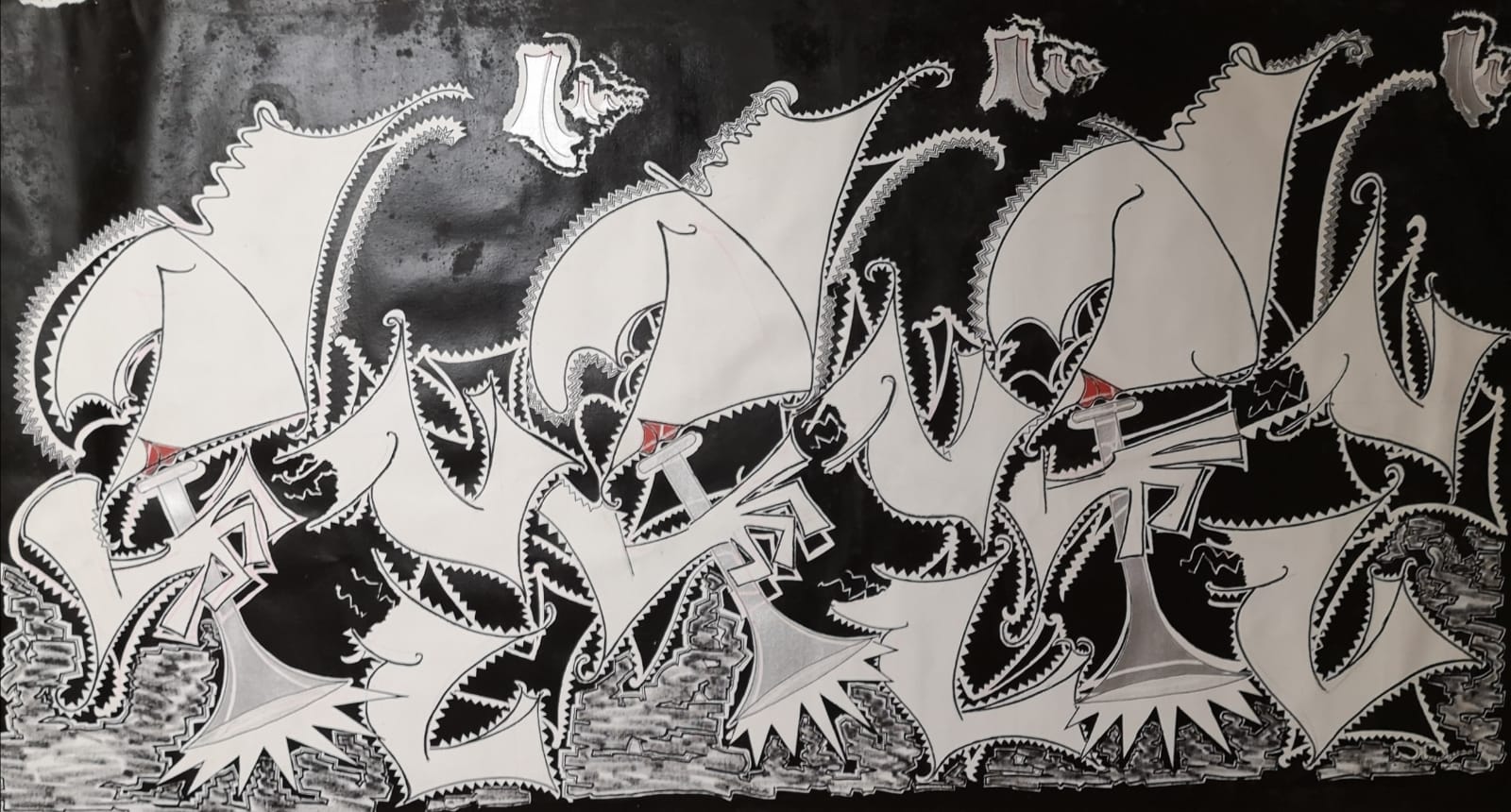
Jean-Michel Basquiat, Keith Haring and Sax Berlin. The Missing Link
Neo-Expressionism in New York in the 1980’s.
A few days ago I was drinking a strong espresso from a tiny cup covered in tiny people. Of course, the tiny people were representations of Keith Haring images. I am struck by the connectivity of our world. Everything, at every level forms bonds, mutations and connections.
Art is no different: its connections morph into myriad forms. These forms pulse with creativity, colour, complexity and concepts. Gazing out onto my rural garden I was struck by an idea that cities are actually incubators of art. They radiate outwards with flashes of creativity and imprint visions onto our subconscious.
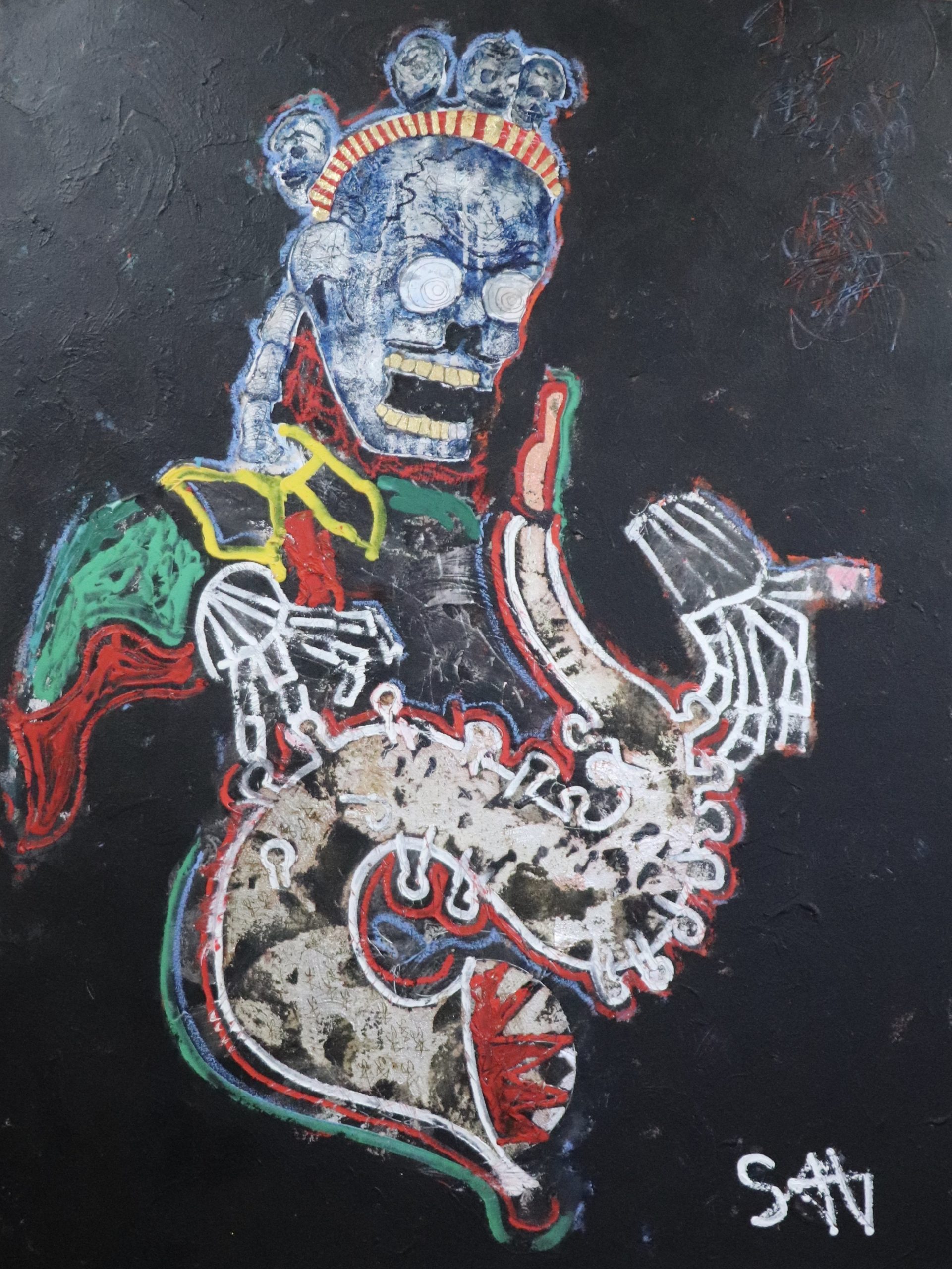
Nowhere is a truer reflection of this than 1980s New York City. This time was ripe for an explosion of creativity brought about by a group of young, outsider artists who used the streets as their canvas and the swirling maelstrom of the dirty, dark and dangerous city as inspiration. Times were changing, and this generation of artists were aware of a moment passing, there was a shift to visceral impactful art that threatened the establishment and spoke to the youth. Neo-Expressionism was born. Two artists serve to exemplify this generation; Keith Haring a fragile, gay white guy and Jean-Michel Basquiat a beautiful butterfly with a self-destructive drug addiction. However, also on the scene, and the streets was another artist, Sax Berlin. Leaving behind the walking on the beach with his wife in Cornwall U.K. on the Atlantic coast and determined to become an artist, he uprooted his family and moved to New York.
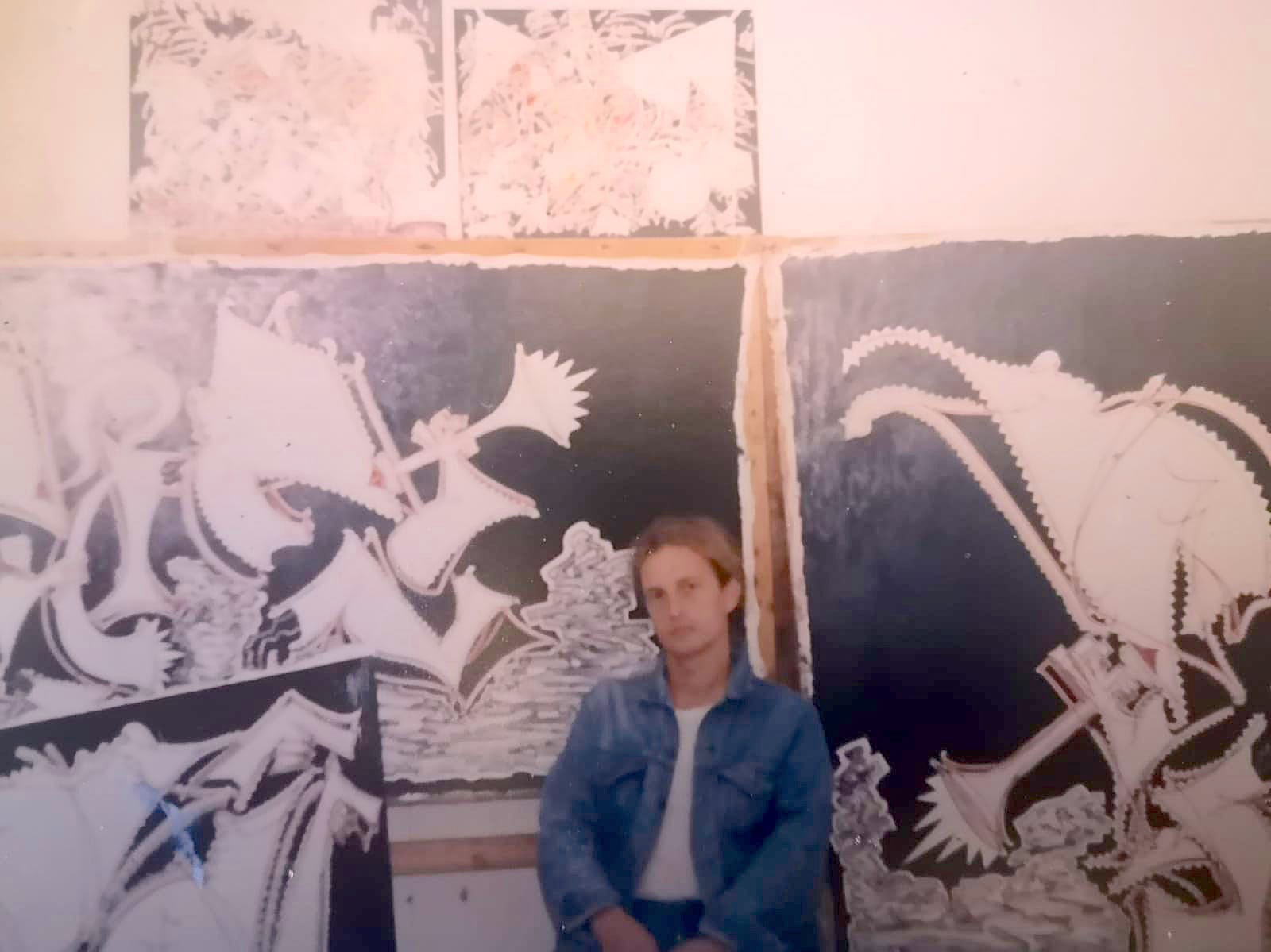
Enter the scene Sax Berlin. Now I hear you ask, who? Sax Berlin, remember the name. Working on the streets of New York by day as a bicycle courier, night time saw him on the street as an artist. Often seeing himself just ahead of the law as they tried desperately to shut down this radical new movement Sax drank deeply from this vibrant subculture of creativity and defiance. He forged his own style alongside Basquiat, Haring and the other artists working in the seething underbelly of the city.
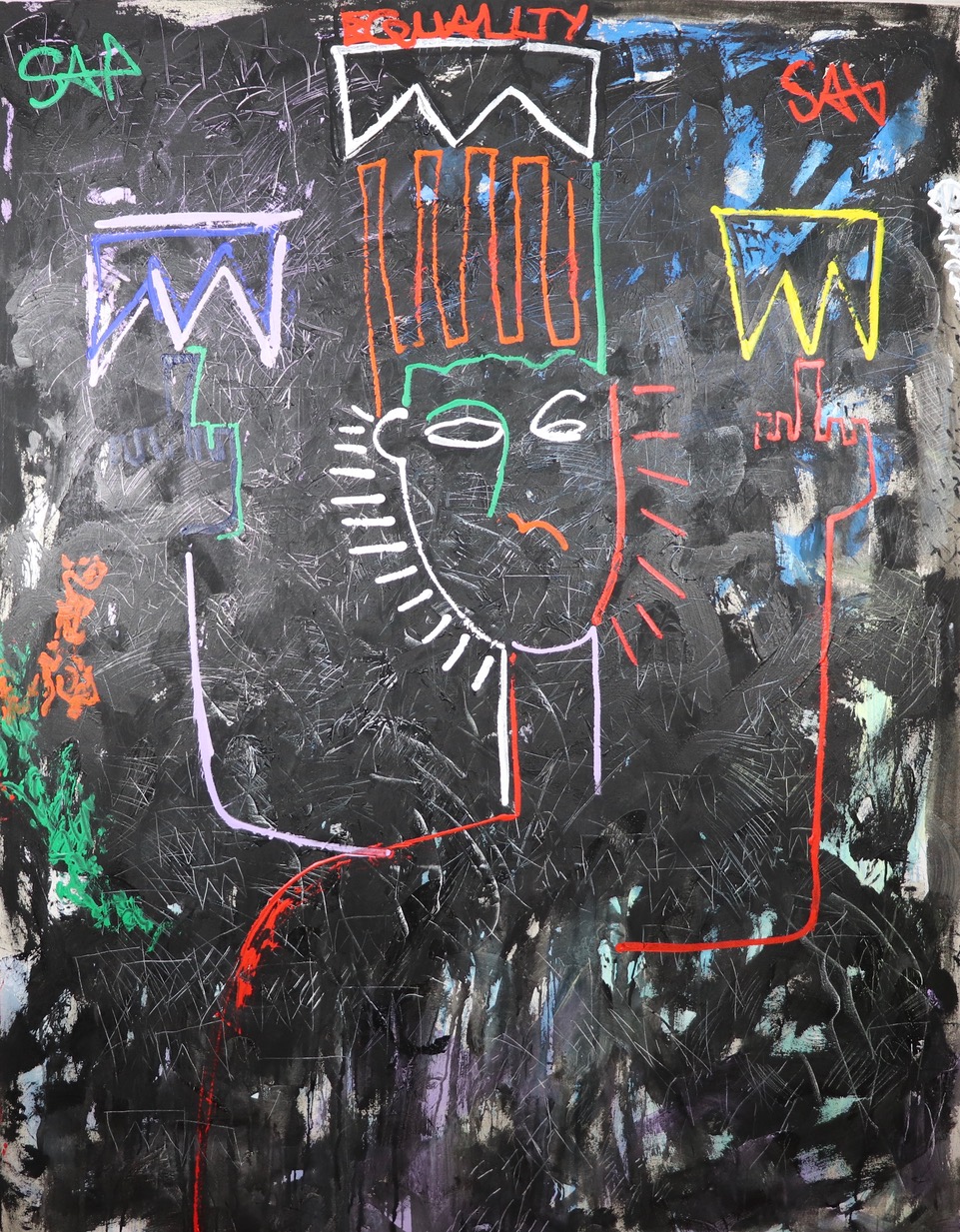
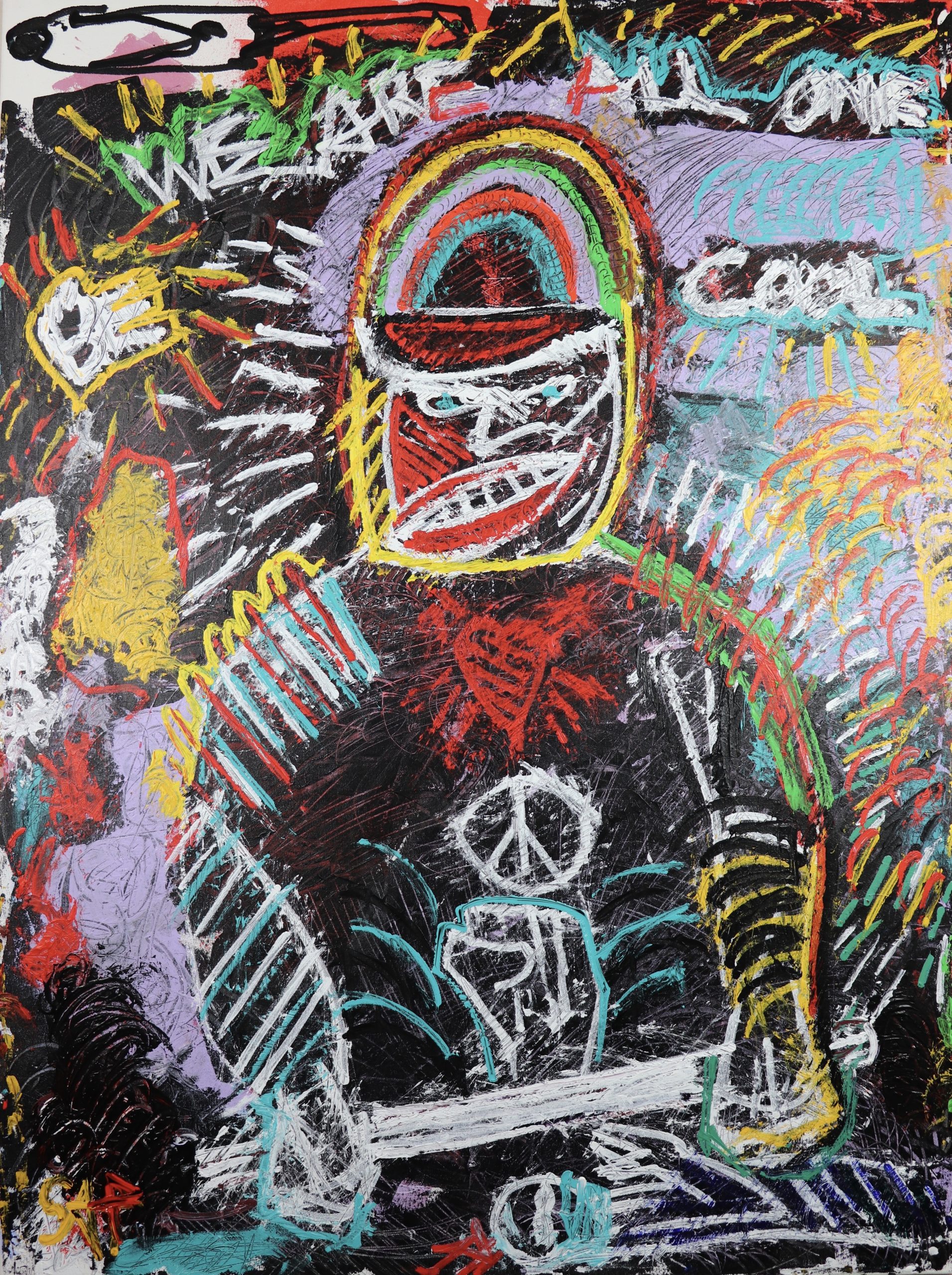
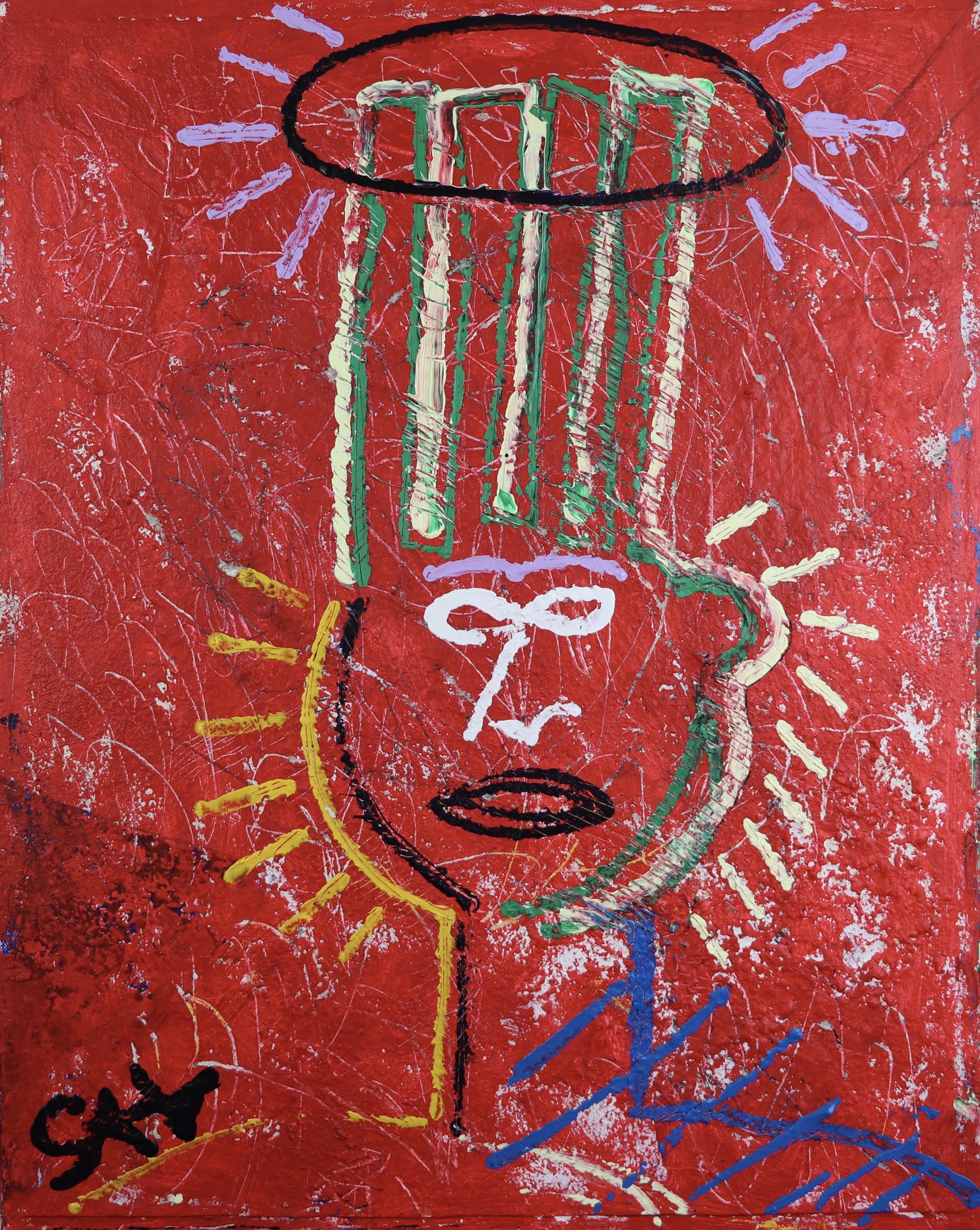
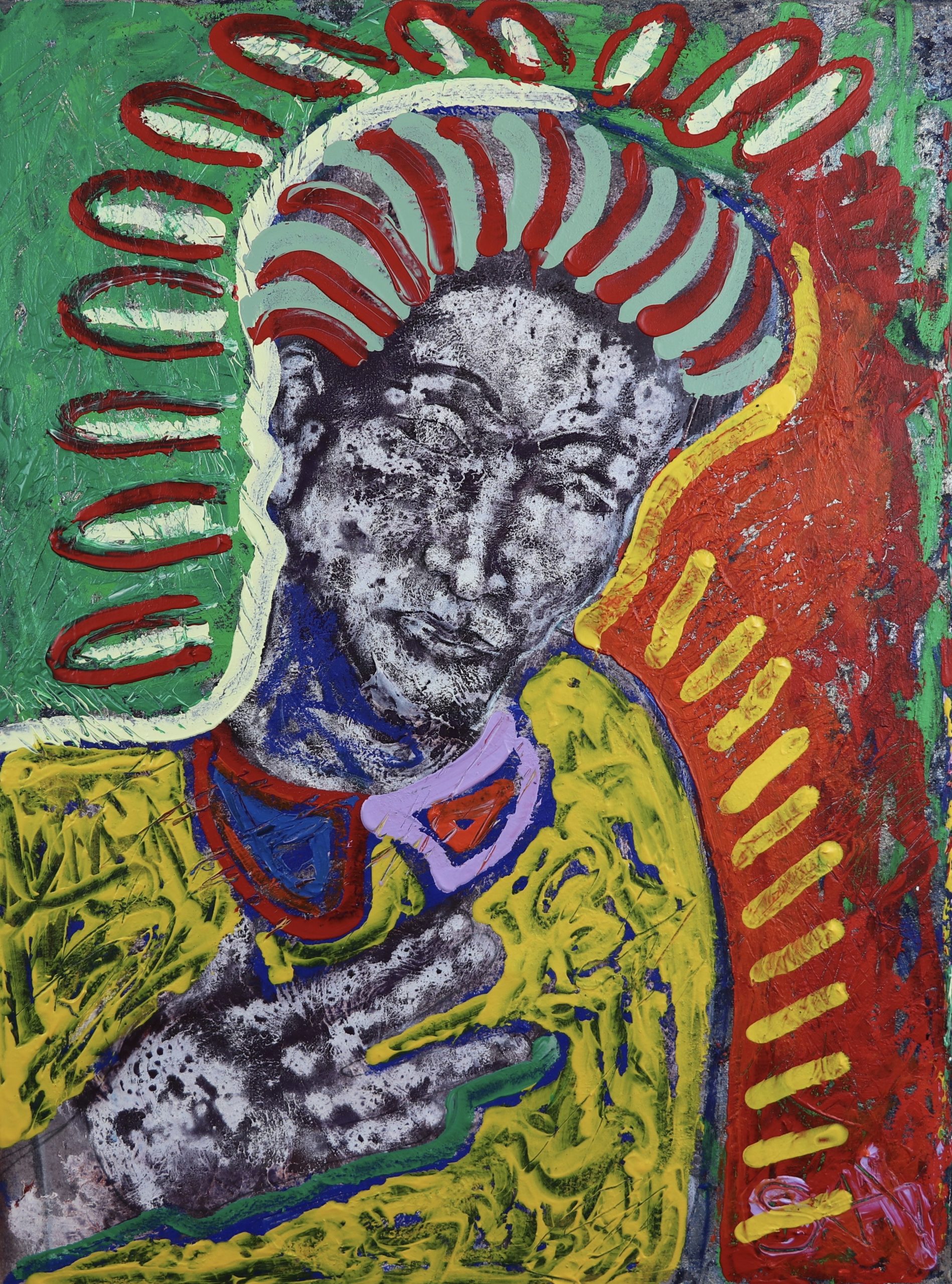
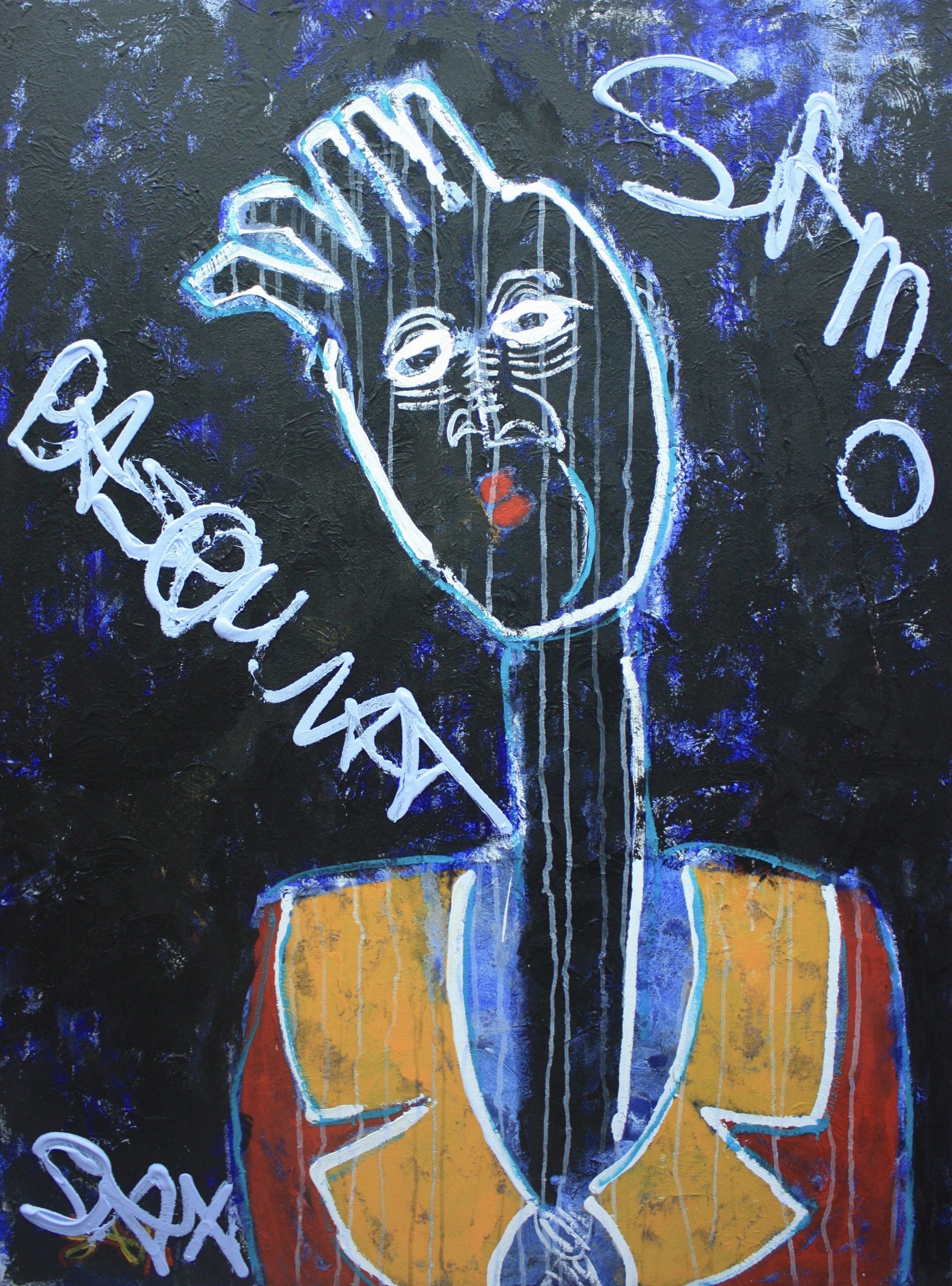
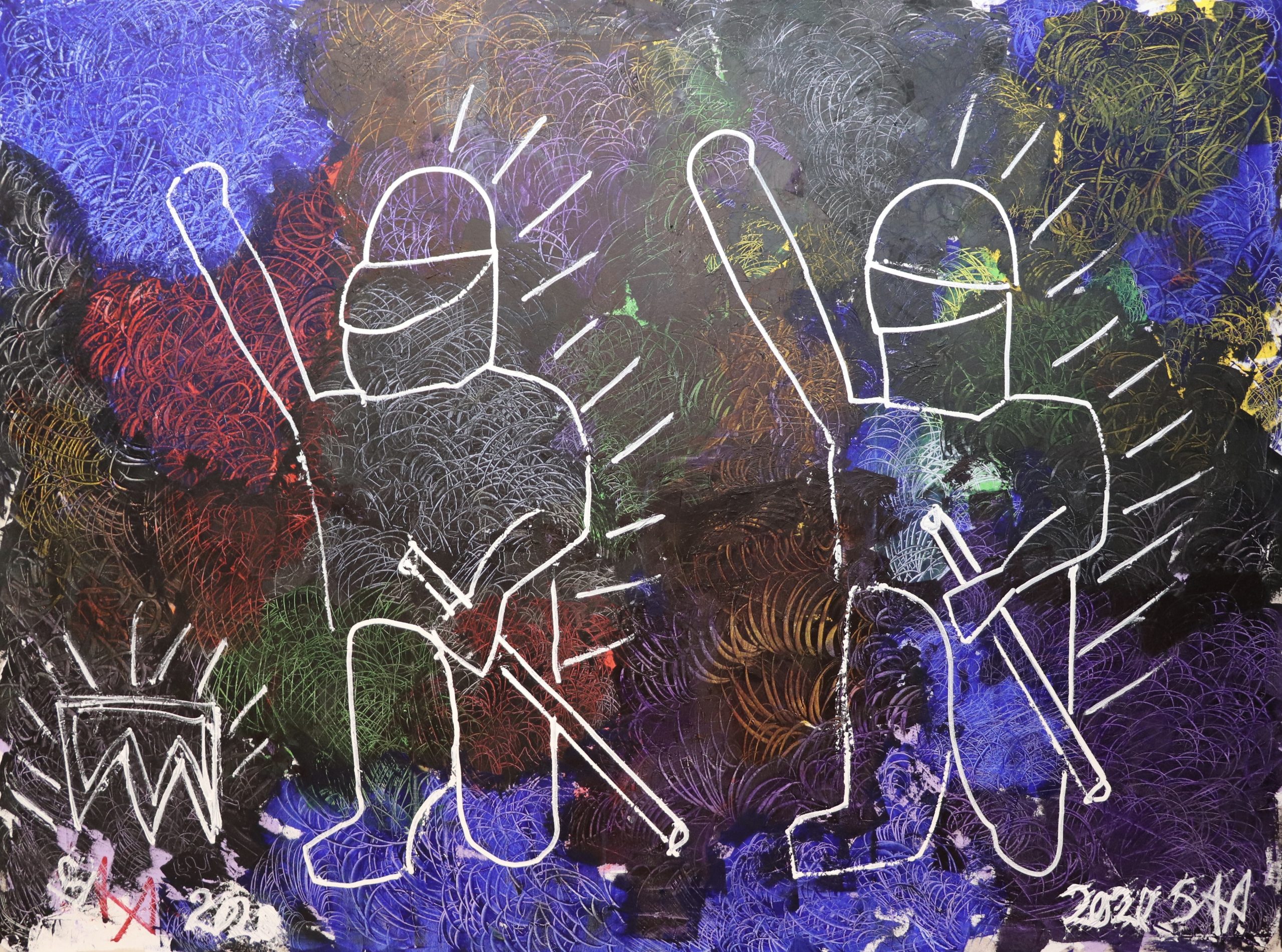
But, in a cruel twist of fate Sax became sick. While others of the movement became casualties of drugs or aids Sax took the decision to leave. On his return to England Sax settled in the coastal community of rural Cornwall, a far cry from the frenetic world of NYC. It was in this beautiful place he started to heal and return to his art.
Putting the urban ways aside Sax worked long and hard teaching himself other forms of art. Mastering techniques that have been the backbone of different historical genres. Grinding his own pigments, learning the techniques of ancient fresco artists, mastering Buddhist forms and filling himself brimful of knowledge.
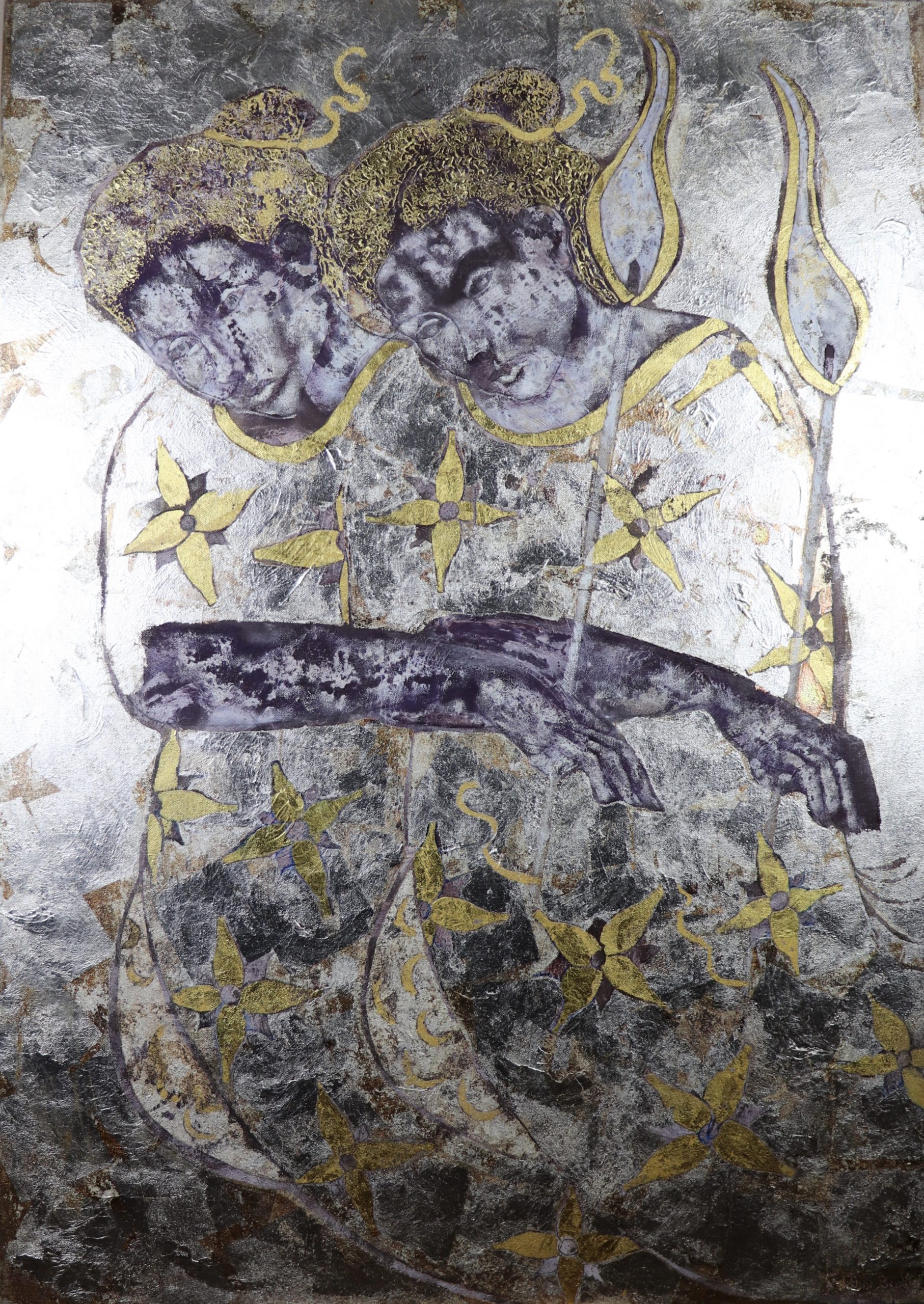
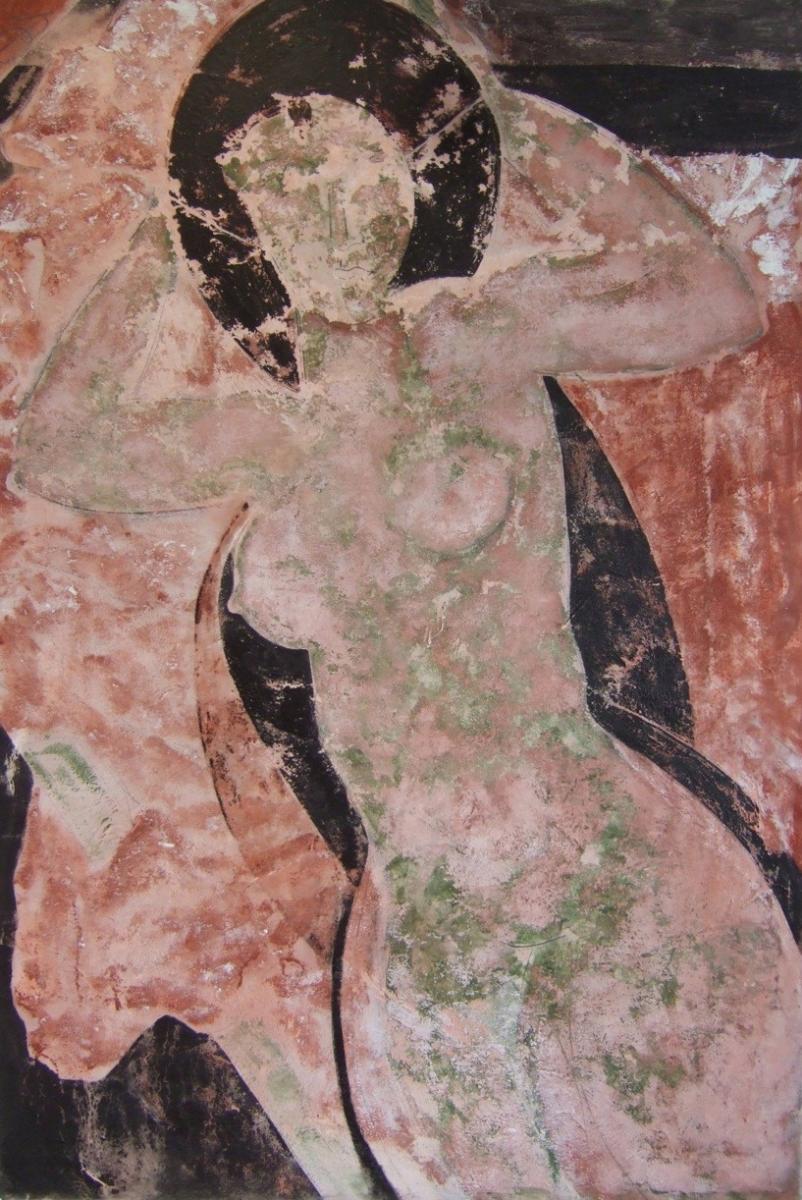
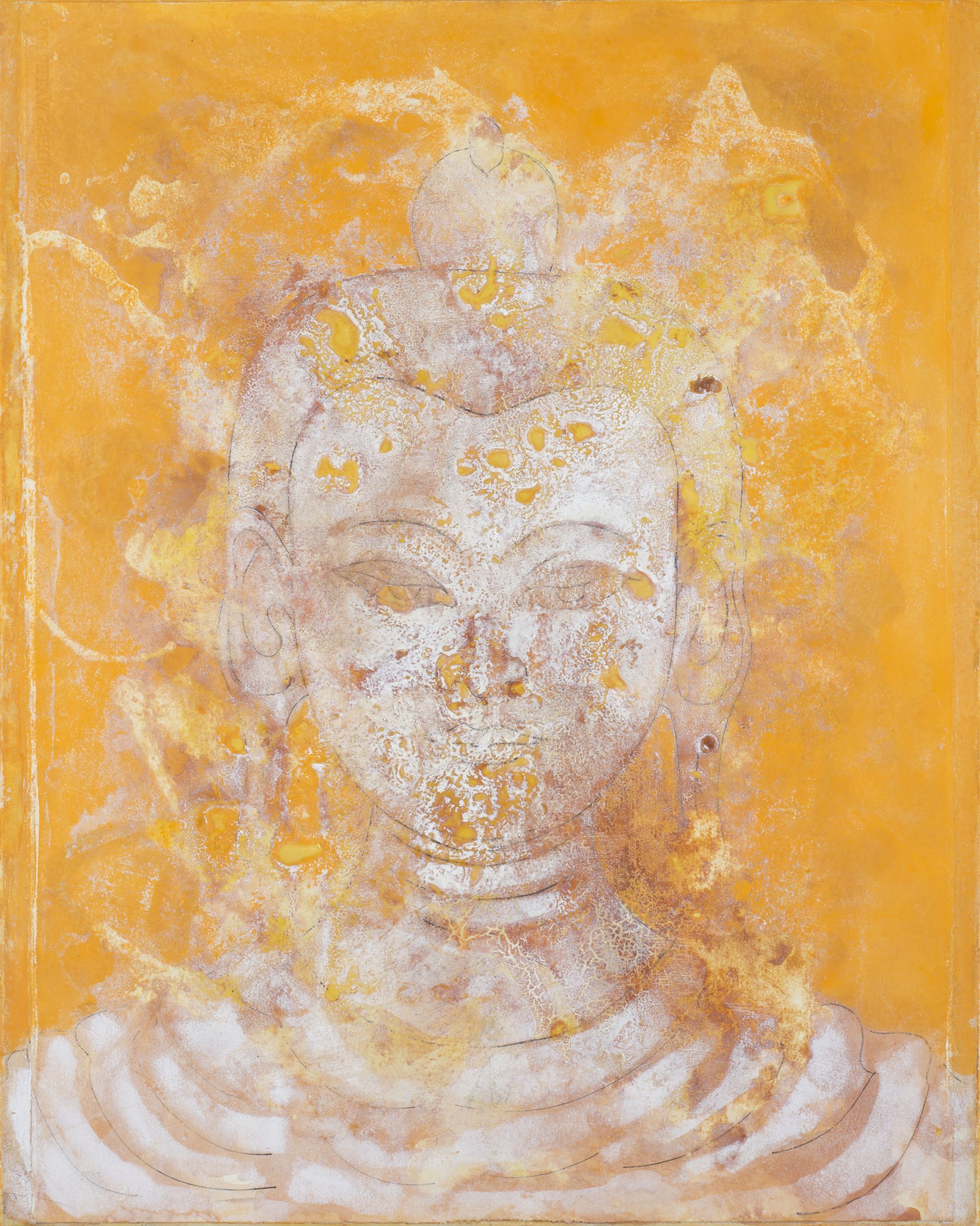
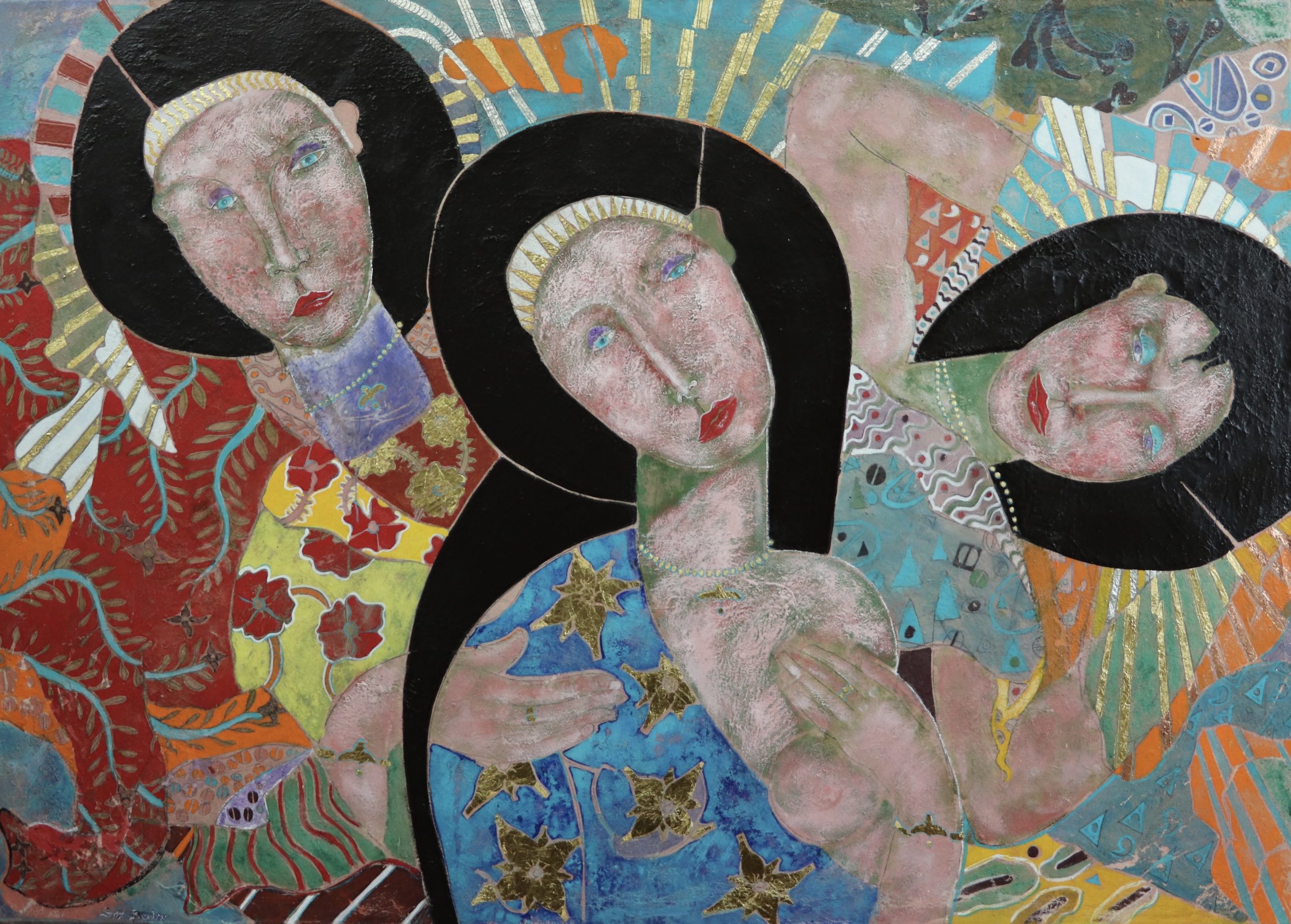
Finding himself the Master Artist he had worked so hard to become, Sax built a steady stable of collectors for his pieces. He continued to work in his hill top studio and saw his paintings travel to the four corners of the world. And then once again the world was in turmoil and Sax Berlin turned in another direction.
And now we see Sax turn full circle to return to the anxiety and energy of the Neo-Expressionists of the 1980s. Keith Haring with his iconic visual language of simple motifs; dogs, babies, and hearts and Basquiat distancing black art away from stereotypes and caricatures served to nuance his work.
The 1980s artists used bright, happy images to sugar coat a bitter pill. A grotesque and lurid collision of Utopia and its demise. The time is now to revisit the radical legacy of ground breaking art created by marginalised artists working in the shadow lands.
Sax Berlin is a deeply humane person and he is using his unique skills to once again drive the narrative of Neo-Expressionism. The genre is resurgent and more accessible, new generations flocking to retrospective exhibitions of artists like Haring Basquiat Kenny Scharf even Warhols Factory and GenerationX.
Recently a client was reflecting on a purchase of a Sax Berlin painting, commenting that “he reminds me of Keith Haring’s work but with much more power “. The links are strong and reach back to those turbulent times when artists reflected on the subjective context of humanity. Sax Berlin is the missing link, the lost strand of DNA now addressing the issues of our times in a visceral assault on our senses. He inherits the mantle of these manic draughtsmen and speaks an immediate common language. Contemporary Expressionism will convey the way humanity will constantly evaluate current themes of concern and connectivity.
As I return to my tiny cup covered with tiny people I can only hope that art will continue to be the creative collective consciousness of us all.

